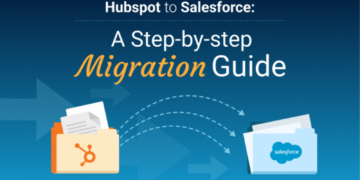Assets under management (AUM) refer to the market value of assets managed by a marketing entity or an individual on a client’s or business’s behalf. The pandemic has unsettled the concept of market value, and industries that employed innovative technologies have survived. Nevertheless, the shift from active to passive investment continues to play a crucial role in leading investment practices.

Analytical company Crisil expects non-banking financial companies’ (NBFCs’) AUM to grow 5-6% in FY22. Asset management marketers should, therefore, get on board and deploy solutions to utilise AUM reporting .
Re-evaluating marketing strategy
Marketing efforts and business development practices were driven by traditional sales strategies, cold calls and referrals in the past. Calling potential investors was the best possible way to convey the benefits of an investment opportunity. However, the marketing landscape is now completely transformed, creating new avenues for driving such practices.
Re-evaluating marketing strategy by employing automation and machine learning tools can bolster AUM reporting. Increased competition is driving marketing automation, while compliance and risk management, customer-specific experience and digital transformation also play a crucial role. Incorporating automation in re-evaluating strategy would help streamline these areas.
Website lead generation
Transforming strategy begins with driving traffic to a company’s website. Providing valuable information regarding AUM reporting opportunities in an engaging manner could turn visitors into investors. It could also generate brand awareness and improve the landscape for referrals.
Video
The video content landscape presents a number of opportunities apart from driving website optimisation practices. For instance, well-drafted videos that are short and to the point can capture the attention of an audience. They could be 59-second videos conveying feedback on a company’s strategy for increasing fund flow and could, among other things, include its winning rate on RFPs.
Social media
Communication with your audience is a crucial part of driving business development practices. This is the age of delivering pitch books via email or social media platforms, so traditional selling methods will not work. This also paves the way for data-driven marketing and enhancing audience engagement
Outsourcing
Investment managers are now assessing the viability of third-party marketing firms due to unsustainable in-house sales and marketing functions and pressure to cut costs. Small, medium-size and large firms are all considering this option, as it is no longer cost-effective to have core teams focus on routine tasks, and onboarding new talent may not be feasible either.
The impact of the pandemic on industries cannot be undermined; this has made preserving resources a priority. This is where outsourcing comes in – an efficient way to minimise the time and money spent on manager due diligence in-house.
Segmentation
Conveying the appropriate message to potential investors is crucial for managing the leads acquired. This practice is called segmentation, where catering to the right people with the right message helps grow the investment base. Let’s say there is a potential investor who is retired and has shown interest in fixed income. The pitch should, therefore, be customer-centric and talk explicitly to a particular prospective client or clients in that category.
It is important to understand what prospective clients are passionate about; this could be categorised by, for example, age, resource platform and type of marketing strategy. However, merely employing the segmentation approach could provide a personalised touch when conveying the marketing message.
Conclusion
This post covers essential pointers on how asset management marketers can grow AUM by driving growth-related marketing strategically. A number of avenues and techniques are available for doing so, and it is vital, therefore, that companies explore these and seek expert advice on which to choose.
























































